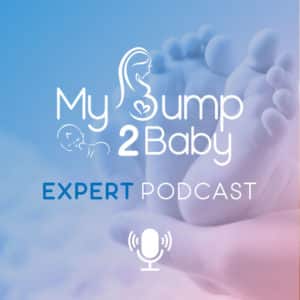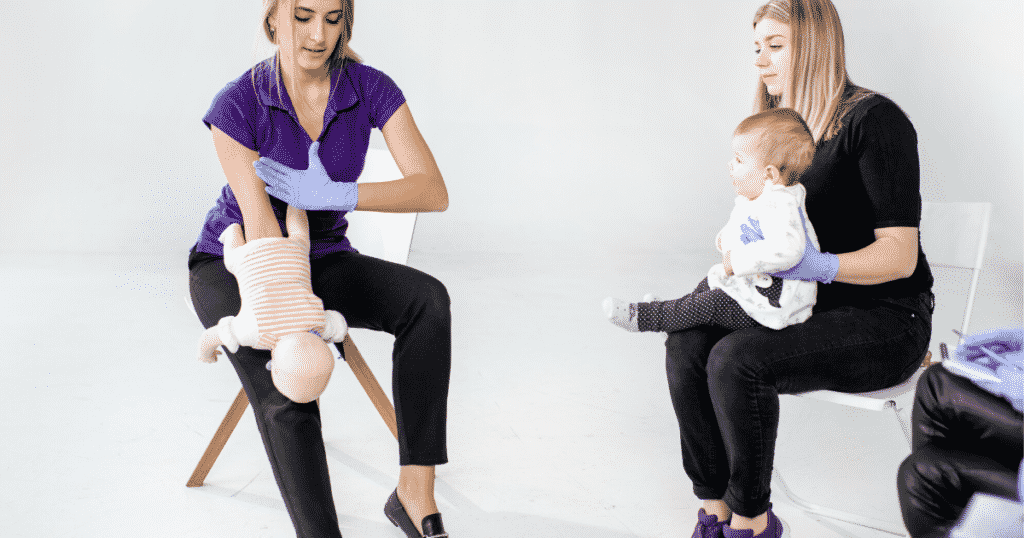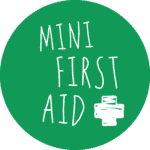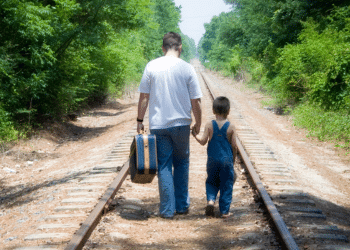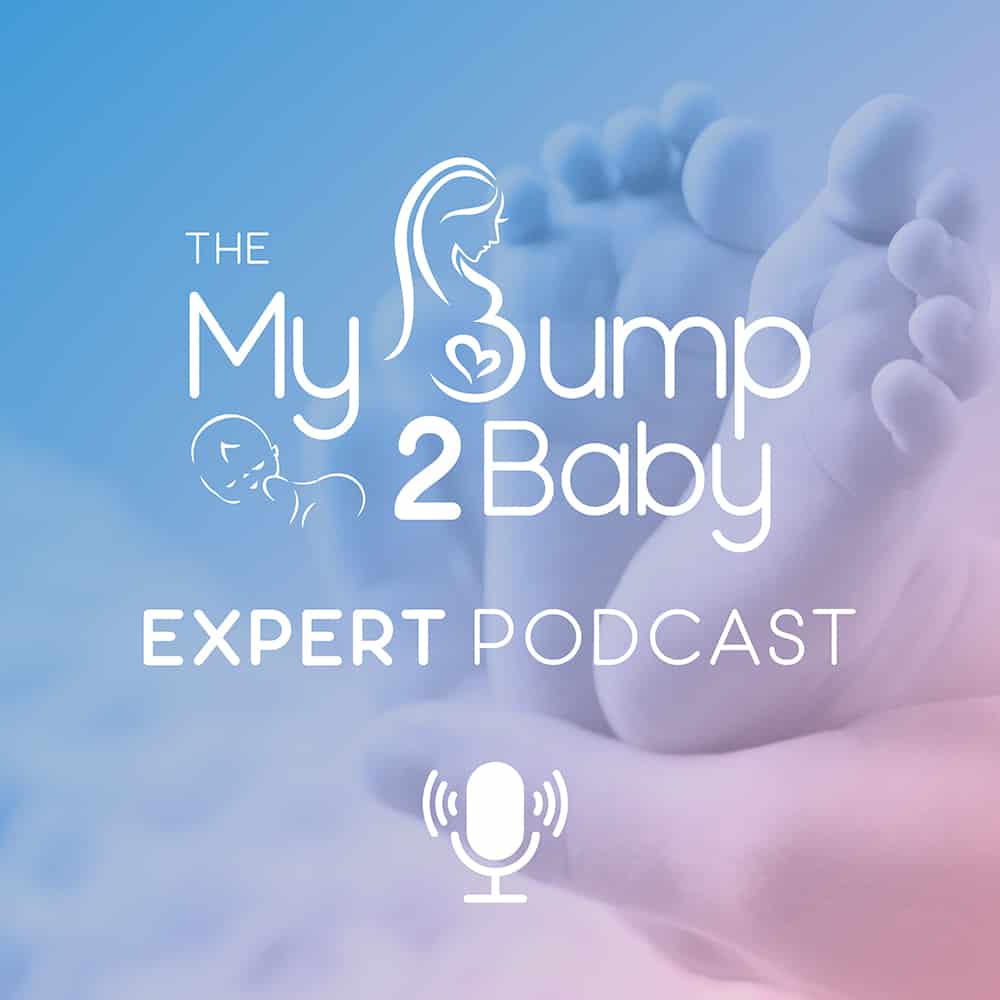- Home Safe Weaning and Choke Prevention
Today we speak to Kate Ball, the founder of Mini First Aid. Kate talks about home safe weaning and prevention of choking. Kate covers more about why is choking such a big fear for many parents, what parents can do around the home to reduce choking risks, top tips for baby weaning, safe eating advice and what to do if your baby chokes.
Here of Mini First Aid’s Social Links:
https://www.minifirstaid.co.uk
https://www.facebook.com/minifirstaid/
https://www.instagram.com/minifirstaid/
You can find your local first aid provider via:
https://www.my-bump2baby.com/directory/things-for-grown-ups/first-aid
Carla: [00:00:00] Hello and welcome to My Bump 2 Baby Expert podcast, where we bring experts from all over the UK. To answer your questions on everything, pregnancy to preschool.
[00:00:29] Today I am joined by the founder of Mini First Aid Kate Ball and we are going to be discussing home safe, eating and weaning and prevention of choking. I hope you enjoy this episode.
[00:00:50] Hello everybody. And welcome to My Bump 2 Baby Expert Podcast. Today, I am joined by the founder of Mini First Aid Kate Ball, and we are going to be discussing the prevention of choking and good practices for home safe eating. So, hi, Kate, how are you?
Kate: [00:01:11] I’m good. Thank you. It’s been a busy lockdown and talking to you is a nice, welcome break from my children.
Carla: [00:01:20] I know the feeling. You’ve got six Kate and I’ve actually only got one and yeah, I need a break as well.
Kate: [00:01:29] Much needed at the moment. So, yeah. So been looking forward to this chat all day today.
Carla: [00:01:33] Oh God, me too. Me too. So I know, um, obviously I’m sure our parents have heard of Mini First Aid um, but today, as I said, we’re going to be talking about choking. I think it’s something that a lot of parents, me for one, uh, worry about massively, um, and you know what to do. Um, you know, if the worst should happen and the child is choking. So I know that’s something that you guys are really passionate about as well, obviously being, um, Mini first Aid. But, um, can we start by asking you, um, why choking is such a big fear for parents? Why do you think that is Kate?
Kate: [00:02:11] When I think so from when we surveyed customers for Mini First Aid, we asked them what was their biggest fear around first aid. And I think sometimes people might think, Oh, it’s having to do CPR. Or perhaps there’s a head injury, for example. But the massively high percentage of our responding customers said that it was choking. Um, in fact it was eight out of 10 said that. Choking was their worst fear. And I think when you’re pregnant and you think back to that time of antenatal period, where you’re prepping the baby and it’s about the nursery and it’s about birth options and how you’re going to, perhaps that you’re going to choose how you can feed your baby, et cetera. Dress, baby name, your baby, et cetera, all those things. And you get sort of all caught in that. And then you get home and you sort of, as everybody knows, you go through that 12 week tunnel where you don’t really get much sleep at all. And you’re just sort of trying to get going. And then as your baby really starts to thrive, you suddenly go, Oh my goodness, they’re nearly six months old and now I’ve got to replace that milk or certainly add to that meal. Want to add some solid food. And for a lot of parents, they suddenly go, Oh my goodness. Because milk is liquid. So it’s much harder, although it is possible to choke on a liquid, it’s much harder to choke on a liquid. And therefore actually, when you’re giving your baby something that’s solid, that’s what makes parents really, really nervous.
[00:03:28] And they will see their babies, something, if you’ve got little ones at home, you’ll know that if babies pick up any toy, because they, they experienced sensory through their mouth. They put any toy in their mouth. If they put it a little bit too far back, it makes them gag. And so parents are sitting there with perhaps a four or five months old baby thinking, Oh gosh, in a few weeks, I’ve got to start putting food in that mouth and be really frightened of it. And that’s why one of the major course content parts for us on our Mini First Aid classes is teaching parents had to deal with choking. Um, so yeah, so it’s, it’s a big concern for parents.
Carla: [00:04:02] Yeah, absolutely. I know for me, it was like, you know, just handing George, like even a banana, I was like on the edge of my seat, like, Oh my God, it is scary. Um, but as, as you know, what you guys do with Mini First Aid going to that first aid course just gives you that bit of confidence to take it to that. You know that next level. So what can parents do around the home then too, reduce choking?
Kate: [00:04:27] So I think one of my top tips for thinking about preparing for your baby to be on the move and even before your baby’s on the move, because they’d always grab things with those small fingers and toes, is to get any hands and knees and, um, Parents hate me when I say this, look under the sofa, and perhaps getting yourself down to baby’s level and look around and see, I mean, this is all, you know, to explore all accident risks, really. But if we’re thinking about choking, think about what’s at baby’s height that they can put into their mouths that potentially could be a choking risk. Now, if you were to draw a circle on a piece of paper, That was about three centimetres in diameter. Anything that could fit inside that circle either be pushed and squashed in or fit in easily is a choking risk for the under threes. So that’s everything from a one Pence piece to a two pound coin um, batteries, balloons. Um, it could be, um, bits of wrapper,
Carla: [00:05:28] Lego, legos one that comes up quite a lot.
Kate: [00:05:32] Yes it is. And, um, and so actually, if you look at, when you look at toy labelings and I know sometimes parents will go, Oh, it says not suitable for under threes. And the reason that the toy safety rating, which is called EN 71, the reason that they say that certain toys aren’t suitable for the under three, just because there is a part on that toy that could fit inside that three centimetre circle and so pay attention to it. If it says not suitable for under threes, the reason it’s not suitable as because of that. And so things perhaps, and also just to make sure with baby toys that you do, don’t buy cheap. And buy things that are potentially hazardous. So if you’re looking at a toy, perhaps you are a little bit concern about the labelling, give it a good tug to make sure that bits aren’t going to come off. And if you’re concerned about the quality of a toy or a chew thing, take it back to the retailer or contact the manufacturer and say, I’m concerned about this. Can you tell me more about the safety rating? If a manufacturer for a baby product or a baby toy has all the right safety ratings in place. They won’t mind being asked those questions. And if there’s any doubt about product being faulty, then they’ll, they’ll change it for you for gladly. They’re required to by law, but they’ll do it because they want to, because they feel passionate about toy safety, but it’s not just toys. It’s all around the home checking things that little ones can get their hands on and put into their mouth. Car key fobs are another one that can pose a choking hazard. Anything can be squashed into that three centimetre circle poses, a risk as a choking hazard. So we just say to parents, get your hands knees, have a look about. Look down under the bed. Look under the sofa, go round on the kitchen floor and spend particular time in the room that you spend most of your time or where your baby spends most of that time. And I think sometimes people go really to town on the nursery. We’ll make sure it’s super safe in here, but actually the only time the babies are in their nursery is when they’re sleeping, they’re cots or they’re in their cots, which means they can’t get to things, but actually they haven’t taken the same looking around their kitchen or their living or dining space, et cetera, and have the same thoughts with your garden, particularly as the weather gets warmer and you’re outside. As you look at, what’s about things like little bulbs, plant heads et cetera, bits, parts of hoses, all sorts of things. Anything that babies can put in their mouths that will fit within that three centimetre diameter potentially poses a risk of choking.
Carla: [00:07:57] That’s really useful. Um, I think as well, when you’ve got an older child that enjoys like certain toys and stuff, I imagine the balance between the two is quite difficult. So if you’ve got like, say a seven or eight year old that wants to play with Lego and then you’ve got your baby as well, um, that, that can be quite difficult, um, to kind of manage. Have you got any tips on that, Kate?
Kate: [00:08:19] Yeah. So my eldest, little boy. I say little, he’s not so little anymore is nine massive, lego fan and he’s got a sister who’s seven and then we’ve got younger ones. Is that , actually we found the best way to prepare him for the little ones being on the move was actually to talk about the shape and this choking risk. And actually get, get him to look at his toys and go, what could fit in this choking circle? So what could fit in? So what could my baby sisters put in their mouth and be at risk of choking and actually, because he had that visual thing to do, he became a lot more responsive to the way that we said that you need to tidy that away. Um, and we showed him, for example, the example that if you take a Duplo brick, which is suitable for the end of threes, versus a Lego brick, a Duplo brick won’t fit in that three centimetres circle because. It’s not a choking risk. And so actually, if you’re going to leave toys lying around, it’s gotta be the chunky stuff, but it doesn’t matter if little ones explore with their mouths. So that’s the really important thing. We also as well for my children. So we actually put, um, stair gates across my older children’s bedroom doors. Because we didn’t want them to shut their doors, but we wanted them bedrooms to feel safe for them to have their smaller toys out and about. Um, LOL dolls and all the bits that go with them as well for my seven year old. And so all those things can be out they can play with them, but the condition is they have to be keep the gates closed on their bedrooms to make sure that the little ones can’t get in.
Carla: [00:09:49] That’s really, that’s such a good idea. Yeah. Fantastic. Thanks for that. Um, so what is your top advice for weaning then Kate?
Kate: [00:10:00] Okay. So, um, there are three principles that you must think about when you’re preparing to wean your baby, and it’s just a really, really good practice moving forward with feeding baby. So think about this, right? Because we know that little ones are watching you. They’ll be well aware of what you’re doing. Be interested in you eating, et cetera. So first there’s got to be a standard rule. In your home and everywhere where you eat with your baby or child that you sit down and eat. And this might seem a rather obvious thing to say we quite often we’ll find ourselves saying to little ones sit down, sit down and then mum, dad or grandparents are wandering around eating. Is that you need to make it good practice that everybody sits down to eat, because we know that when a baby is choking, they will be silent. So if your baby or your toddler has wandered off to another room, holding a rice cake or some crisps or a piece of fruit, and they’re in the other room, if they can silence, perhaps as a busy parent, you might think, Oh, great, I’ve got a couple of minutes peace. But they could, without wanting to frighten people. They could be choking in the other room and you won’t know. So you sit on your bottom where a parent or carer can see you and you stay there until you finished eating. And if you want to get down, then the food has to go down and we don’t eat when we’re walking around. And it’s a really, really good practice to employ, make that a rule. But also grownups are the worst with always eating when we’re walking around. I still, even though I go and profess about this all the time, I still sometimes catch myself in the morning, standing there, the piece of toast, sit down, kids, sit down, and you’ve really got to make sure that as an adult, you demonstrate that behaviour to children and start that right from day one.
[00:11:42] The second point after sitting. It’s chopping or breaking food into manageable pieces. Now you talked about your little one and bananas and Ooh, it’s frightening. There is a really good tip with bananas, which is that you can break them down the spines. And they form long pieces. So rather than cutting them into circles, because if you cut them into circles, they potentially are a choking risk because they sit inside that three centimetres, but you can actually split them apart, practice with a banana and you’ll break them down the spines. And they break into long thin pieces, which are a much further reduced choking risk, but also a baby little one can get it right inside their fist and hold on to it with it sticking out the top. And with that broken up pieces. When you’re thinking about food for babies, think about their size of their fist, not yours, but their fist and thinking about things being in lumps around that size, because that’s a nice, easy size for them to get hold off and sticks work really well because then they can have it poking out the top of their fist if they’re trying to feed themselves as they get older, that chopping or breaking into pieces, things like sausages. Cut them length ways, grapes, olives, cherry tomatoes, everything length ways, because if you cut it in to a circle, you’re making it perfect. A choking hazard for it to block the wind pipe.
[00:13:01] And then the final thing, we’ve done sit we’ve done, chop or break up. And the final thing is chewing. Again. It seems really obvious, but little ones learn by watching their parents and carers, and they need to learn that they need to move food around their mouth. To chew it or gum it before they swallow it and pass it down into their tummy. So it was a really, really good idea as an adult when you’re eating in front of a little one to make sure that you really chew. So if anyone’s listening now, move your mouth, give it a really really good move. And that’s what you need to do in front of your children, because as adults. We are very guilty of inhaling our food, we shovel because we don’t need to chew as much because we’ve got a wider gullet so we don’t need to chew as much, but actually that’s not a good example to set our little ones.
[00:13:48] So it’s sit, chop and chew, and they’re your three best practice things before you even think about giving them the actual food or, you know what you’re going to put on the menu or how you’re going to wean or when you’re going to wean is making sure that you’ve got that set up too in practice at home.
Carla: [00:14:06] That’s great. That is brilliant and easy to remember as well. Um, so have you got any other safe eating advice that you’d give to maybe older children or?
Kate: [00:14:17] Well, I think the main thing is really is that everybody makes sure that they know how to deal with choking. So the way we deal with choking is obviously making sure that if a baby is choking, they’ll be silent. We’d have them up and out of their high chair, nice and quickly. And we were administering what we call back blows, and if they’re not effective, then we do a, an abdominal thrust. You need to be taught how to do that. So that Mini First Aid can, can show you how to do that. Please make sure that you take the time to learn what to do, because even if you put every prevention in place. Things happen little ones keep us on our toes. And what you need to know is that if your baby go silent lips, turn blue and it’s obvious to you that they’re choking, then you need to be able to deal with that nice and quickly. And to have older siblings, others, all in the family, everyone sitting with that sit, chop chew really, really helps because then they’re setting the example. So I am forever saying to my nine year old. Sit down, please sit down while you’re eating your one year old sister is watching you. So it’s that really important part that they can play in the family. So, yeah, they all get a bit fed up of me going sit, chop chew kids, sit chop chew.
Carla: [00:15:27] No, no, I, I do, you know what? I never thought that myself, so that’s it. That’s really interesting. So Kate then obviously, if a baby does choke, what would you actually do?
Kate: [00:15:38] Well, so if a baby is choking, then you need to have them up and out of the highchair really quickly. And we administer back blows where we hit a baby very hard on the back, if you feel behind your neck, just a bit between your shoulder blades, the very firm flat part of your back. So right at the top of your shoulders, and you want to hit that part in the back up to five times really hard. Now you might see or here health is to saying that in a choking situation, if you haven’t left a bruise, you’ve not hit them hard enough. And that is the level of impacts that you need to give in a choking situation to force the air out of the lungs and force that object out of the windpipe.
[00:16:19] If, uh, after five back slaps that object hasn’t come out and we need to do something called an abdominal thrust, which is where on a baby. We would place two fingers on their chest. So we turn them over on their back so that we can put our fingers on to their chest and force aggressively. It’s like the CPR motion. But you’re forcing a bit more aggressively. Imagine poking somebody that you don’t like, down between the centre of their chest we can just try and force air up and out of the airway. And once child is over one, but abdominal thrust is actually the Heimlich manoeuvre, um, where you would be behind somebody and cupping underneath their, uh, their rib cage. And scooping as if you’re scooping ice cream, scooping the air and you’re scooping up and out to force the, um, Uh, force the object out. It’s really, really good practice to get on a first aid course where you can have a go on a mannequin or even practice on a Teddy, um, so that you can have a go with that technique and feel really confident with it.
Carla: [00:17:13] Yeah, I think I’ve actually done a Mini First Aid course and I thought it was fantastic because it just gives you that confidence that someone’s saying, no, actually, if you just do it a bit like that and that, and by the end of it, you know, you feel so confident, um, that I just think for peace of mind, I think it’s something that you should do and then refresh it with as well, because I just think it’s, it’s. It’s just, it is that confident. And just knowing that, you know, if the worst happens, you, you know, you’ve got the best chance to save your little one. So, so Kate, would you mind telling our parents just about where they can find Mini First Aid courses and a bit about Mini First Aid and what you cover?
Kate: [00:17:54] Yes, of course. So you can find our website is www.minifirstaid.co.uk. We’re covering, we run classes right across the UK. We’re training thousands of parents every week. And the classes last for like two hours and the costs from just £20. So we always say for the price of a takeaway you could learn to save your little one’s life now because we’re in, um, situation with COVID at the moment is that our teaching has had to change from being face to face. So we’ve got different options. We have an online course available, which you can do in the comfort of home in your own time. Stop and start as you wish and take a test at the end. Or if you would like to see a trainer in person, we can come and train in an outdoor space with you. Obviously living in the UK, it’s going to be weather permitting or you have got to have a shelter or your final option is to do it via Zoom. So we’ve got some Zoom classes available. And then as soon as we’re able to, we’ll start running those classes in person, but we’ve just got to make sure that all the right infection control processes are in place to make that safe for folks attending, uh, the classes themselves cover CPR, choking, as we’ve talked about today. Bumps, uh, bleeding, brakes, febrile seizures, sepsis and meningitis awareness. Now with first aid, there are so many more topics that we can cover. Um, but we have to get that lifesaving bit into the two hours. And the way that we describe it to parents is to say that from when an accident happens, you are approximately depending on where you are in the UK, between eight and twelve minutes waiting for an ambulance. And during that time, your baby or your young child is your responsibility. And so it’s teaching you what to do in those eight to twelve minutes. So we’re not going to spend hours with you teaching you how to do beautiful bandaging, because frankly, when you get to the hospital, uh, the trained practitioners can do that for you. We’ll teach you how to deal with bleeding by holding a fresh, clean, nappy on a bleed and keeping it in that way until the ambulance arrives.
[00:19:50] So it’s really practical. All of our trainers are parents, carers or work with children themselves quite a lot of them are healthcare professionals as well. So they’re very down to earth. So they get it. They understand the sleep deprivation, perhaps trying to remember things when your brain is very busy and most importantly, we welcome babies at our classes. So obviously are face to face classes, or even when you’re on zoom is absolutely okay for baby to be there and you don’t need to hide them somewhere or arrange childcare. You can bring them along with you. Um, So that you don’t have to worry about that childcare. And we also, I think the final thing to say is to encourage you, to also encourage all family members. So grandparents, friends, neighbours, anyone that’s going to be helping you or be in contact with your baby. You almost need to make it a condition that they learn first aid. Um, particularly for those grandparents out there, who I know when I asked my mum, when I set up Mini First Aid, six years ago, I asked her when she last did her first aid training. And it was when she was in the girl guides and she’s now 70. Just slightly out of date.
Carla: [00:21:03] It’s funny you say that. I actually said to my mum the other day, are you first aid trained? And she said, Oh yeah, yeah, I did it. Um, when I was, I think it was 25 and I thought. Well, you, you’re almost double in fact, she’s almost triple that for goodness sake. So yeah, it is something that I think just cause things change don’t they Kate? As well. And, um, I think sometimes it’s a case of just refresh it. I mean, for 20 pounds, um, the fact is that you, or, you know, your friends or anyone that goes on one of these courses, could. Could in fact, save your child’s life or you could save their child’s life. It’s just, it’s it’s, you know, it’s very, very important. So, um, thanks so much today, um, for that Kate.
Kate: [00:21:48] No problem. It’s been lovely to chat to you.
Carla: [00:21:50] Kate. Just finally, can you tell our parents where they can find you on social media and your website if that’s okay?
Kate: [00:21:57] So our social media handles are @minifirstaid we’re on Instagram, Twitter, and on Facebook. And then our website is www.minifirstaid.co.uk. If you go to our website, as well as being able to put in the postcode to where you live so that we can find you your local trainer. There’s also an opportunity to sign up to our newsletter. And every week we send out top health care, first aid, paediatrics, so baby related health stuff goes out every week to sort of compliment the two hour class. So for example, this week, Um, you may have seen some articles in the press about the caterpillars that people have been finding in their garden that are actually poisonous. So we’ve got a leading bug specialist, uh, writing a really good article about what to look out for in you gardens that home and then we then advise on what to do if baby was stung, um, or, um, have been injured in a, in a allergic reaction situation. So always going to be extra stuff from us. And so, yeah, and look out for us on our social as well, cause there’s always top first aid tips on there.
Carla: [00:22:59] Brilliant. And one last thing is I’d have to say your first aid kit is fantastic. So, you know, if you are, you know, a new parent and, um, you know, you’re looking for that, that gift, it might not be the forefront of your mind for first aid kit, but it’s always to handy to have in. Um, so I just wanted to say that, cause I found it really useful.
Kate: [00:23:19] When we created the birthday kit, we were very, I guess I was a little bit disheartened by what was on the market really, which was that most of us sort of in these green coloured utilitarian type pouches. That you know, when us mums, particularly, I’ve got these beautiful change bags, you don’t really want something that looks a bit rubbish hanging out of it. So we wanted something that was, it was really practical and have all the right things in for babies for paediatrics first aid. Is that also, it looked good. So it’s in a little spotty case. We’ve won lots of awards for its design, as well as what’s inside it, which is great. And then they, again, you can purchase Mini First Aid Kits at our classes. So when you come to a class or meet a trainer, or you can buy them via the website or on Amazon.
Carla: [00:24:04] Excellent. So thanks again, Kate. And we’ll speak to you soon no doubt.
Kate: [00:24:09] Brilliant. Thanks for having me.
Carla: [00:24:10] Thank you.
[00:24:14] Thank you for listening then to My Bump 2 Baby Expert podcast. If you would like to find help and support from experts in your local area, head over to www.mybump2baby.com and you will also be able to find local pregnancy to preschool groups, classes, businesses, and services in your local area.
[00:24:49] This podcast is sponsored by My bump 2 Baby family protection and legal directory. Being a parent is such a minefield. It’s so difficult deciding who to select when it comes to financial advice or family law solicitors. My Bump 2 Baby works with one trusted financial advisor and one trusted family law, solicitor in each town throughout the whole of the UK. To find your nearest advisor or family law, solicitor, head over to www.mybump2baby.com/familyprotectionlegal.

